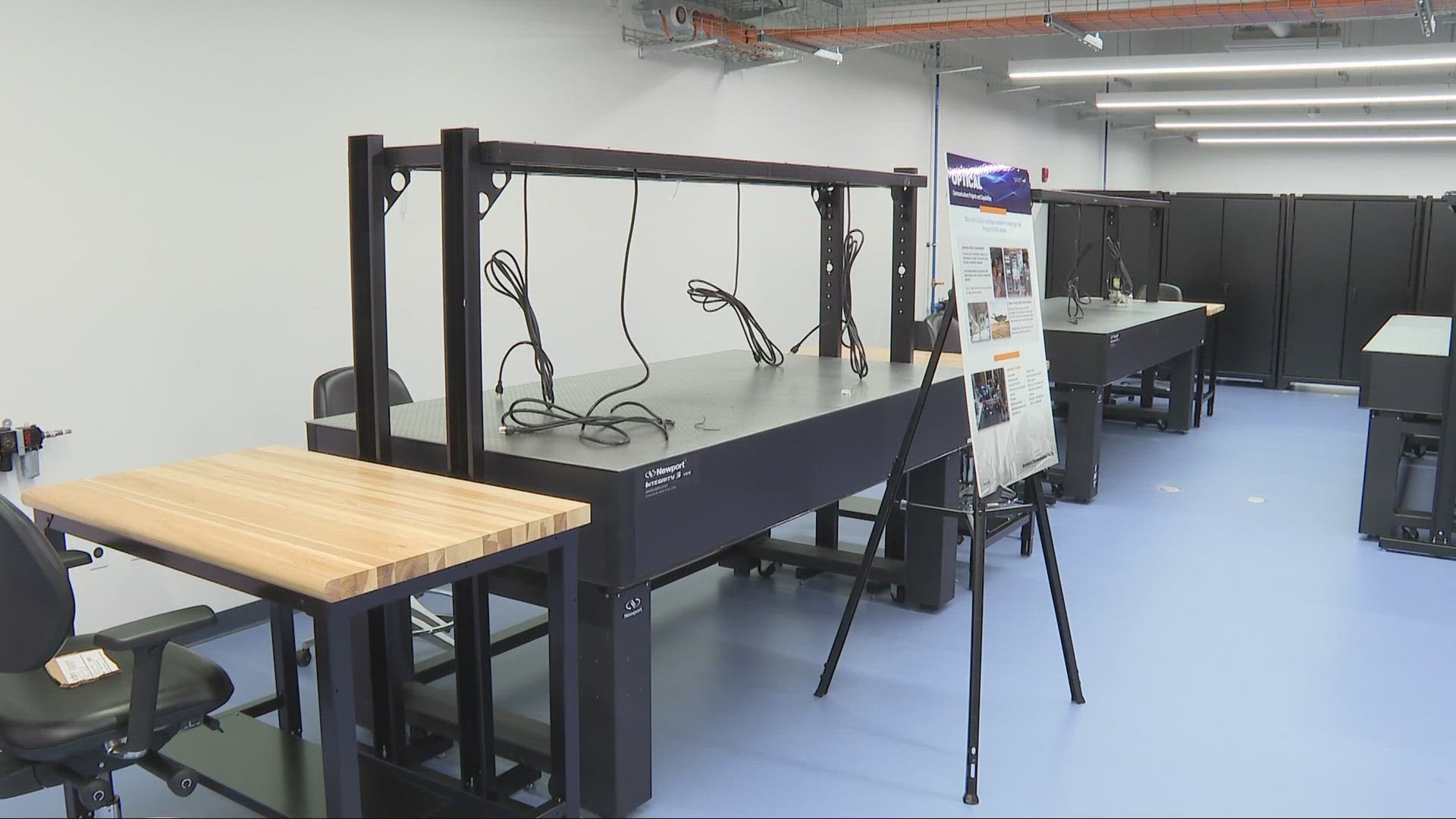CLEVELAND — On Wednesday, local representatives and NASA officials gathered in Cleveland for a ribbon cutting ceremony at NASA Glenn’s new Aerospace Communications Facility. Inside the new building, researchers and scientists will develop advanced communications methods for use not only on Earth, but in space exploration, including in the Artemis mission.
The 54,000 square foot building houses 25 labs, designed for researchers and scientists to come together to work on optical communications, quantum communications, and cognitive communications. The goal is to make communications faster and increase bandwidth and throughput, according to NASA Glenn Center Director Dr. Jimmy Kenyon.
“If we’re going to have people on the other side of the moon, they’ve got to be able to talk to planet Earth,” Dr. Kenyon said. “And they’re going to be getting gobs of data that they’ve got to get back to planet Earth so we can see it, we can understand it, we can learn from it, and we can use it to make our Earth better and our mission stronger.”
NASA officials, including Bryan Smith, director of facilities, test, and manufacturing at NASA Glenn, said what is developed, built, and tested in these laboratories will have a direct impact on the Artemis mission.
“So Artemis – at some point, we’re going to have to put a communication system on the moon. Just like we put our cell towers on Earth, and we’re very used to going around and getting all this communication, our astronauts will need something similar,” Smith said. “You will need to come up with those advanced communication systems, that’s what this building will help us do.”
However, both men also said that things learned at the Aerospace Communications Facility will also have impacts on our planet.
“This all applies to day-to-day air/space transportation systems as well,” Smith said.
“Think about the applications here on Earth. For aircraft, we have a mission or a vision for developing advanced air mobility. Think of this as the smaller aircraft that really unlock rural areas in Ohio,” said Dr. Kenyon. “You can take doctors out to meet with patients who can’t get to hospitals. Or you can do package deliveries, big packages to places that need them but are hard to get to. That’s a big deal, but you need communications to make sure that those aircraft are always connected. So we’re developing technologies for space, and those technologies also have applications here, and we’ll be developing those technologies here in this new facility.”
On a tour of the facility, officials, members of the media, and NASA employees were able to see a new horizontal near-field antenna range, where antennas will be tested in a sound-dampened room, in addition to lab spaces, including a room for to explore a cognitive communications program, meant to improve performance and efficiency of communications assets with enhanced autonomy.
This building is part of a larger plan at NASA Glenn to revitalize the campus by their 100-year anniversary in 2041, which is also when officials are hoping to land on Mars. The plan includes getting rid of some old buildings on campus, investing in building new buildings, such as the ACF, and also maintaining existing buildings, according to Carlos Flores, branch chief of strategic planning at NASA Glenn.
Dr. Kenyon said he hopes this new building, which features plenty of space for scientists to meet, work together, and collaborate, will attract new talent to NASA Glenn.
"It really is state of the art, and it's going to be an exciting place for our people to work,” he said.

